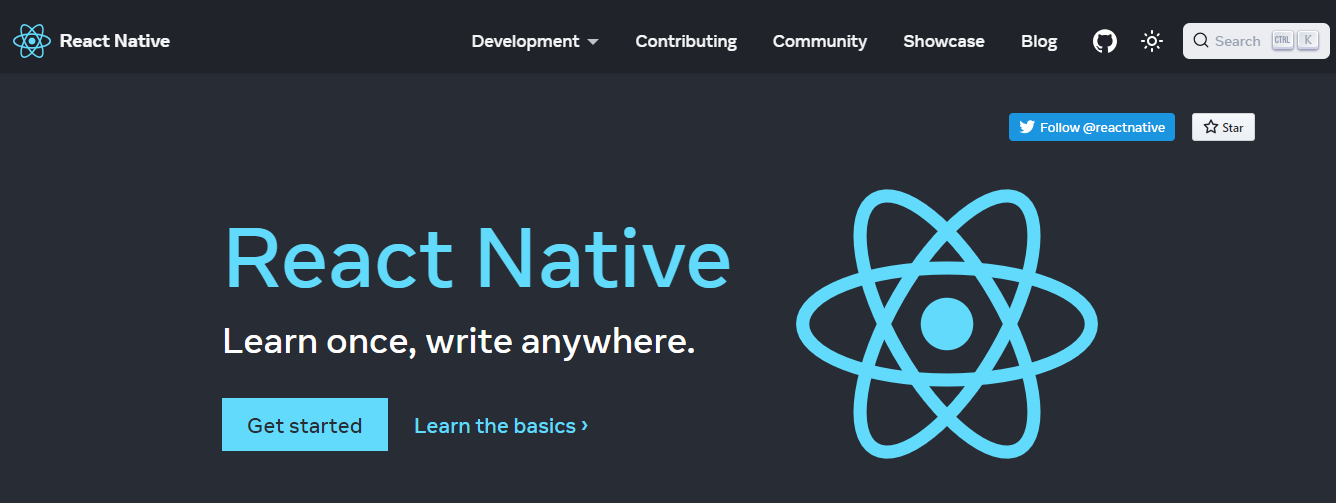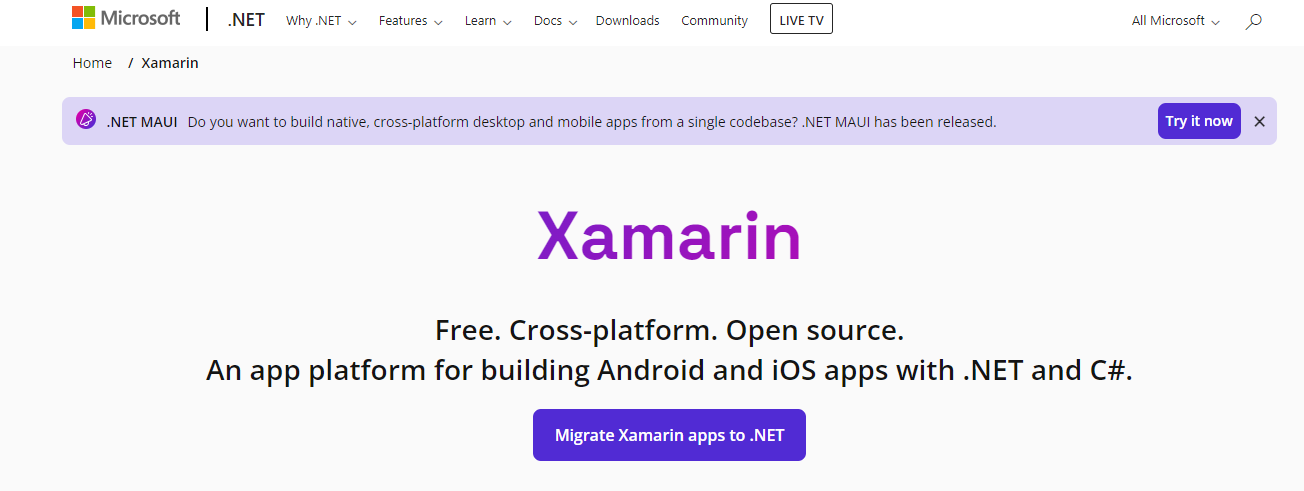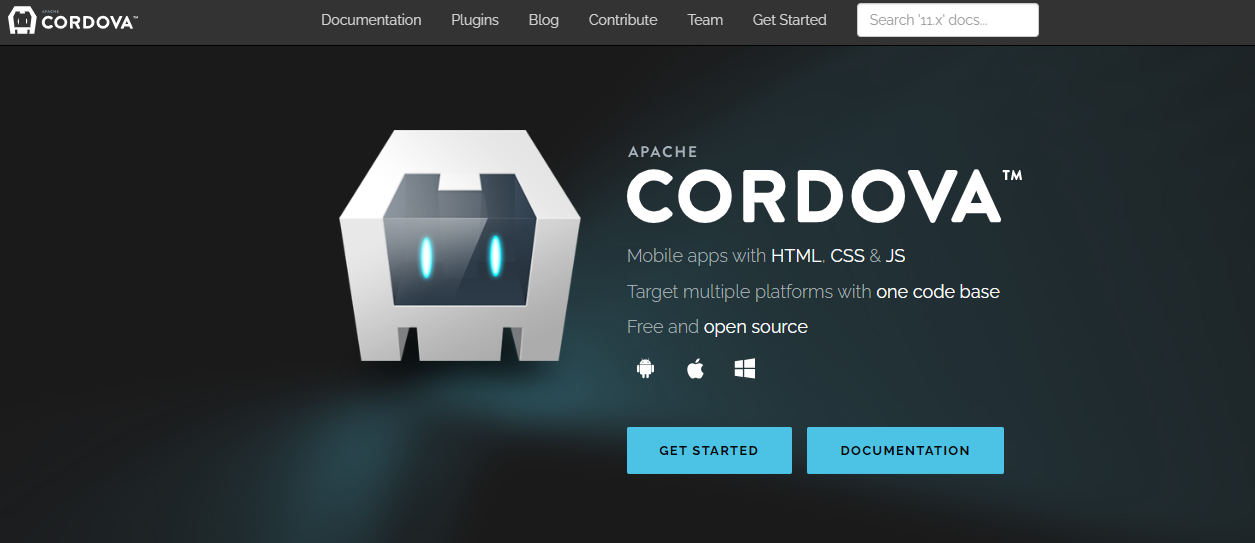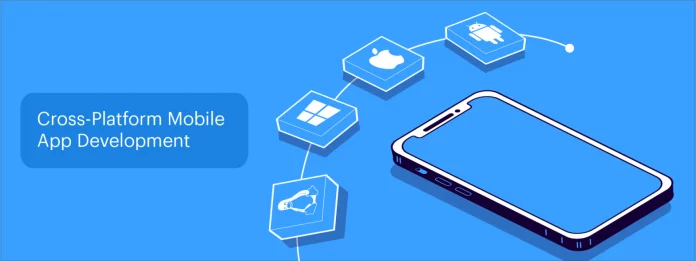Looking for the best cross-platform development framework? Then you have landed at the right spot. In today’s fast-paced digital landscape, businesses and developers face the challenge of reaching users across multiple platforms and devices. Whether it’s smartphones, tablets, desktops, or other emerging technologies, catering to diverse platforms has become crucial for success. This is where cross-platform development comes into play, offering a solution to build applications that can run seamlessly on different operating systems and devices.
What is Cross-Platform Development?
Cross-platform development refers to the practice of creating software applications that can be deployed and run on multiple platforms with minimal modifications. These platforms can include different operating systems like iOS, Android, Windows, macOS, and web browsers, among others. The primary goal of cross-platform development is to streamline the development process, reduce costs, and accelerate time-to-market by leveraging shared code and resources across various platforms.
Traditionally, developers had to build separate applications for each platform, which often required different programming languages, tools, and specialized knowledge. This approach was time-consuming, resource-intensive, and prone to inconsistencies between versions. Cross-platform development frameworks emerged as a solution to address these challenges, offering a more efficient and unified approach to application development.
According to Persistence Market Research, the global cross-platform app development framework industry revenue is expected to total US$ 120 billion in 2023.
Criteria for Evaluating the Best Cross-Platform Development Framework
When choosing a cross-platform development framework for your project, it’s essential to consider various factors to ensure it aligns with your specific requirements and goals. Here are key criteria to evaluate each framework:
-
Platform Support
One of the primary reasons for adopting cross-platform development is to target multiple platforms simultaneously. Therefore, the framework’s platform support is crucial. Assess the framework’s compatibility with the major operating systems, such as iOS, Android, Windows, macOS, and potentially others like Linux or web browsers. Additionally, consider the support for different device types, including smartphones, tablets, desktops, and wearables.
2. Performance
Performance is a critical aspect of any application, and cross-platform frameworks can sometimes be perceived to have performance trade-offs compared to native development. Evaluate the framework’s performance by studying benchmarks, conducting performance tests, and examining real-world case studies. Consider factors like app startup time, responsiveness, rendering speed, and memory consumption.
3. User Interface (UI) and User Experience (UX)
A seamless and visually appealing user interface is vital for user satisfaction. Look for a framework that offers flexible and robust UI components and tools to create intuitive and consistent user experiences across platforms. Consider whether the framework provides native-like UI elements and customization options to match the platform’s design guidelines.
Ensure that the framework allows for responsive design, enabling the application to adapt to different screen sizes and orientations gracefully. A good framework should also handle UI transitions and animations smoothly.
New to the design world? Our mobile app design agency can help you turn your imagination into an engaging design.
4. Community and Support
The strength of a framework’s community and developer support can significantly impact your development experience. A thriving community means more resources, tutorials, plugins, and third-party libraries that can expedite your development process. Check online forums, GitHub repositories, and community engagement to gauge the framework’s active user base.
Moreover, consider the level of official documentation and support provided by the framework’s maintainers. Well-documented frameworks make it easier for developers to learn and troubleshoot issues.
5. Learning Curve
Assess the learning curve associated with the cross-platform development framework. Some frameworks might be more approachable for developers familiar with specific programming languages or paradigms. Evaluate whether your team has the requisite skills or if training and upskilling will be necessary.
A more straightforward learning curve can lead to faster adoption and quicker development, making it an important factor, especially for time-sensitive projects.
6. Integration Capabilities
Modern applications often rely on various services and APIs to deliver a complete user experience. Assess the framework’s integration capabilities with third-party services, cloud platforms, databases, and other essential tools. Check whether the framework provides native module support or plugins that enable seamless integration with device features.
Additionally, consider the framework’s compatibility with popular development tools and continuous integration/continuous deployment (CI/CD) pipelines to streamline your development workflow.
7. Development Tools and IDE Support
Efficient development requires robust development tools and integrated development environment (IDE) support. Evaluate the availability of IDE plugins and extensions for popular development environments like Visual Studio Code, Android Studio, Xcode, or others.
Overview of Best Cross-Platform Development Framework
1. React Native

React Native, developed by Facebook, has emerged as one of the leading cross-platform development frameworks. Leveraging the power of JavaScript and React, it allows developers to build native-like mobile applications for both iOS and Android platforms using a single codebase.
Features and Benefits
- Hot Reload: One of React Native’s standout features is Hot Reload, which enables developers to see real-time changes in the app as they modify the code. This significantly speeds up the development and debugging process.
- Code Reusability: With React Native, a large portion of the codebase can be shared between the iOS and Android versions of the app. This not only saves development time but also ensures consistency across platforms.
- Native Performance: React Native bridges the gap between native components and the JavaScript code, resulting in near-native performance. It allows developers to build high-performance applications without compromising on user experience.
- Large Community and Ecosystem: React Native boasts a vast and active community of developers. This means abundant third-party libraries, plugins, and tools to extend the framework’s functionality and solve common development challenges.
- Backed by Facebook: Being backed by Facebook ensures that React Native remains well-maintained and receives regular updates, making it a reliable choice for long-term projects.
Use Cases and Examples
- Social Media Apps: React Native’s ability to deliver a native-like experience makes it ideal for social media apps where responsiveness and smooth animations are crucial.
- E-commerce Applications: Many e-commerce companies opt for React Native due to its rapid development capabilities and the need to reach both iOS and Android users.
- Enterprise Apps: React Native’s code reusability makes it a popular choice for developing internal business apps that need to run on different platforms.
- Uber Eats: Uber Eats is an excellent example of a React Native app that successfully delivers a seamless user experience on both iOS and Android platforms.
Limitations and Challenges
- Performance Complexity: While React Native offers good performance, complex and computationally intensive tasks might still require native code implementation to achieve optimal results.
- Platform-Specific Components: Some platform-specific components or APIs may not be readily available in React Native. This can require additional native code integrations, adding complexity to the development process.
- Version Compatibility: Keeping up with the latest versions of React Native and its dependencies can be challenging, as it may lead to compatibility issues with existing code.
- Large App Size: React Native apps can have larger binary sizes compared to native apps due to the inclusion of JavaScript runtime and bridge components.
Get Started with React Native! Read our article on how to create your own React Native app today.
2. Flutter

Flutter, developed by Google, is a relatively new but rapidly growing cross-platform development framework that has gained significant popularity among developers. Using the Dart programming language, Flutter enables the creation of high-performance, visually appealing applications for both iOS and Android platforms.
Features and Benefits
- Single Codebase, Fast Development: Flutter’s “write once, run anywhere” approach allows developers to build applications for multiple platforms using a single codebase. This significantly speeds up the development process, reducing time-to-market.
- Expressive UI Components: Flutter offers a rich set of customizable UI components, called widgets, that enable developers to create visually impressive and consistent user interfaces across platforms. Flutter’s “hot reload” feature also accelerates the design and debugging process.
- High Performance: Flutter’s unique architecture eliminates the need for a JavaScript bridge, resulting in exceptional app performance and near-native execution speed.
- Pixel-Perfect Designs: Flutter uses its rendering engine, Skia, to create pixel-perfect designs, ensuring that the app’s appearance remains consistent across various devices and screen sizes.
- Rich Ecosystem: Despite being relatively new, Flutter has a growing ecosystem with an active community contributing to various packages, plugins, and extensions that extend its functionality and support different use cases.
Use Cases and Examples
- Mobile Apps with Complex UI: Flutter’s expressive UI components make it an excellent choice for apps that require a sophisticated and visually engaging user interface.
- MVPs and Prototypes: Flutter’s fast development capabilities make it ideal for building minimum viable products (MVPs) and prototypes to validate app concepts quickly.
- Cross-Platform Games: Flutter’s high performance and ability to deliver smooth animations make it suitable for developing cross-platform games.
- Real-Time Applications: Flutter’s reactive architecture makes it well-suited for real-time applications, such as chat applications and live event updates.
- Google Ads: Google Ads is an example of a Flutter app that showcases its capability to deliver a seamless user experience on both iOS and Android platforms.
Limitations and Challenges
- App Size: One of the challenges with Flutter is its app size. Since Flutter includes a built-in UI rendering engine and framework, the app size can be larger compared to native apps, especially for smaller projects.
- Limited Native Features: Although Flutter offers numerous native plugins, it might not cover the entire spectrum of platform-specific features, which could require additional native code integration.
- Maturing Ecosystem: While Flutter’s ecosystem is growing rapidly, it may not yet match the extensive range of libraries and community support that some more established frameworks offer.
- Learning Curve for Dart: Flutter’s adoption might require developers to learn the Dart programming language, which might not be as widely known as other languages like JavaScript or C#.
Unravel the debate! Read our article on Flutter vs. React Native to make the right Choice.
3. Xamarin

Xamarin, owned by Microsoft, is a mature and robust cross-platform development framework that allows developers to create native mobile applications for iOS, Android, and Windows using a single codebase. Leveraging C# and .NET, Xamarin provides a powerful development environment for building high-performance and feature-rich applications.
Features and Benefits
- Native Performance: Xamarin enables developers to build fully native applications, utilizing platform-specific APIs and native UI components. This results in excellent performance, as the apps run directly on the device’s operating system.
- Code Sharing: With Xamarin, a significant portion of the code can be shared across platforms, reducing development efforts and ensuring consistency between iOS and Android versions of the app.
- Access to Native APIs: Xamarin allows developers to access platform-specific APIs, which is particularly beneficial for applications requiring deep integration with device hardware and features.
- Seamless Integration with Visual Studio: Xamarin seamlessly integrates with Microsoft’s Visual Studio IDE, providing a familiar development environment for C# developers.
- Microsoft Support and Tools: As a Microsoft product, Xamarin benefits from strong support and continuous updates, making it a reliable choice for enterprise-level projects.
Use Cases and Examples
- Enterprise Applications: Xamarin is widely used for building enterprise-level applications where performance, security, and integration with existing systems are crucial.
- Productivity Apps: Xamarin is an excellent choice for developing productivity apps that require smooth synchronization and data exchange between mobile devices and cloud services.
- Healthcare and Finance Apps: Applications in the healthcare and finance sectors often require access to native APIs and secure data handling, making Xamarin an ideal fit.
- Storyo: Storyo is a storytelling app that uses Xamarin to provide a seamless user experience on both iOS and Android platforms.
Limitations and Challenges
- Learning Curve: Developers new to C# and .NET might face a learning curve when adopting Xamarin. However, those familiar with C# will find it easier to transition.
- App Size: Xamarin apps may have larger file sizes compared to purely native apps, as they include the Mono runtime and framework libraries.
- Community and Third-Party Libraries: While Xamarin has a dedicated community, it might not be as extensive as some other cross-platform frameworks, resulting in a more limited selection of third-party libraries and plugins.
- Update Lag: As Xamarin is owned by Microsoft, updates and new features might be subject to a slower release cycle compared to community-driven frameworks.
4. Ionic

Ionic is a popular open-source cross-platform development framework that focuses on building hybrid mobile applications. Leveraging web technologies like HTML, CSS, and JavaScript, Ionic allows developers to create cross-platform apps that run on iOS, Android, and the web. It combines the power of web development with native-like capabilities, making it a flexible and accessible choice for building mobile applications.
Features and Benefits
- Web Technology Stack: Ionic utilizes standard web technologies like HTML, CSS, and JavaScript, making it accessible to a wide range of developers with web development experience.
- Platform Agnostic: Ionic’s codebase can be deployed to various platforms, including iOS, Android, and progressive web apps (PWAs). This platform agnosticism allows developers to reach a broader audience with a single codebase.
- UI Components: Ionic offers a rich library of pre-designed and customizable UI components, providing a native-like appearance and user experience across different platforms.
- Cordova Plugins: Ionic integrates seamlessly with Apache Cordova plugins, allowing developers to access native device features and capabilities.
- Rapid Development: By leveraging web technologies and pre-built components, Ionic facilitates rapid application development and prototyping.
Use Cases and Examples
- Content-Based Apps: Ionic is well-suited for building content-focused applications, such as news apps, blogs, and educational platforms.
- Internal Business Apps: Cost-effective solution for internal enterprise apps, reaching multiple platforms without complex native features.
- Startups and MVPs: Fast MVP validation for startups and entrepreneurs with cross-platform app development.
- Sworkit: Sworkit, a fitness app, is an example of a successful application built using the Ionic framework.
Limitations and Challenges
- Performance: Smooth UX, but not as performant as native apps, especially for graphics-intensive or complex animations.
- Limited Access to Native Features: Accesses device features via Cordova plugins, but some cutting-edge or platform-specific functionalities might not be available.
- App Store Approval: App store approvals for hybrid apps may face strictness, leading to delays or rejections.
- Webview Limitations: Hybrid apps run in a web view, limiting hardware utilization and native feature access.
5. PhoneGap (Apache Cordova)

PhoneGap, now known as Apache Cordova, is an open-source cross-platform development framework maintained by the Apache Software Foundation. It allows developers to build hybrid mobile applications using web technologies like HTML, CSS, and JavaScript. Web apps in native containers, access native device features and distribute through app stores.
Features and Benefits
- Web Technology Stack: Apache Cordova empowers devs to use web skills for mobile apps, appealing to a wide developer base.
- Native Device Access: Access native device features like camera, GPS, and accelerometer using plugins.
- Cross-Platform Compatibility: One codebase for iOS, Android, and Windows apps – seamless cross-platform development.
- Rapid Prototyping: Apache Cordova is well-suited for rapid prototyping and MVP development, enabling quick validation of app ideas.
- Community and Plugins: Apache Cordova thrives with an active community and plugins, expanding its capabilities in open-source development.
Use Cases and Examples
- Simple Apps: Perfect for simple apps, no complex native features needed, and access to basic device capabilities.
- Content-Driven Apps: Efficient solution for content-centered apps like blogs, catalogs, and informational applications.
- Internal Business Tools: Ideal for internal business tools, data-driven apps with camera and GPS access.
- Habits: Well-Being and Mental Health: “Habits” app, powered by Apache Cordova, prioritizes personal well-being and mental health.
Limitations and Challenges
- Performance: Apache Cordova’s hybrid apps may lack performance compared to fully native ones, particularly for graphics or CPU-intensive tasks.
- App Size: Larger app size due to web view and native bridge components in the package compared to purely native apps.
- User Experience: Apache Cordova offers satisfactory UX, but some users may detect differences in app responsiveness vs. fully native apps.
- Limited Access to Latest Features: Apache Cordova’s native feature access may be delayed due to community-developed plugins. Consider this when choosing a framework.
- App Store Approval: Apache Cordova app approvals in stores are subject to stricter guidelines than other hybrid frameworks.
Final Words
Ultimately, the right choice of a cross-platform development framework will depend on a careful balance of your project’s requirements, the development team’s skills, user experience demands, and business goals. Remember that there is no one-size-fits-all solution, and the best framework for one project might not be the ideal choice for another. By thoroughly evaluating these factors and aligning them with the strengths of each framework, you can make an informed decision that sets your project up for success.
Stay updated on cross-platform development trends for cutting-edge app development. Evolving technology, latest frameworks. Stay agile, adapt, and remain competitive in mobile app development by assessing evolving needs and adjusting development approaches.
Unlock Your app’s potential today! Partner with the leading mobile app development company in Singapore to build a future-ready mobile app.









